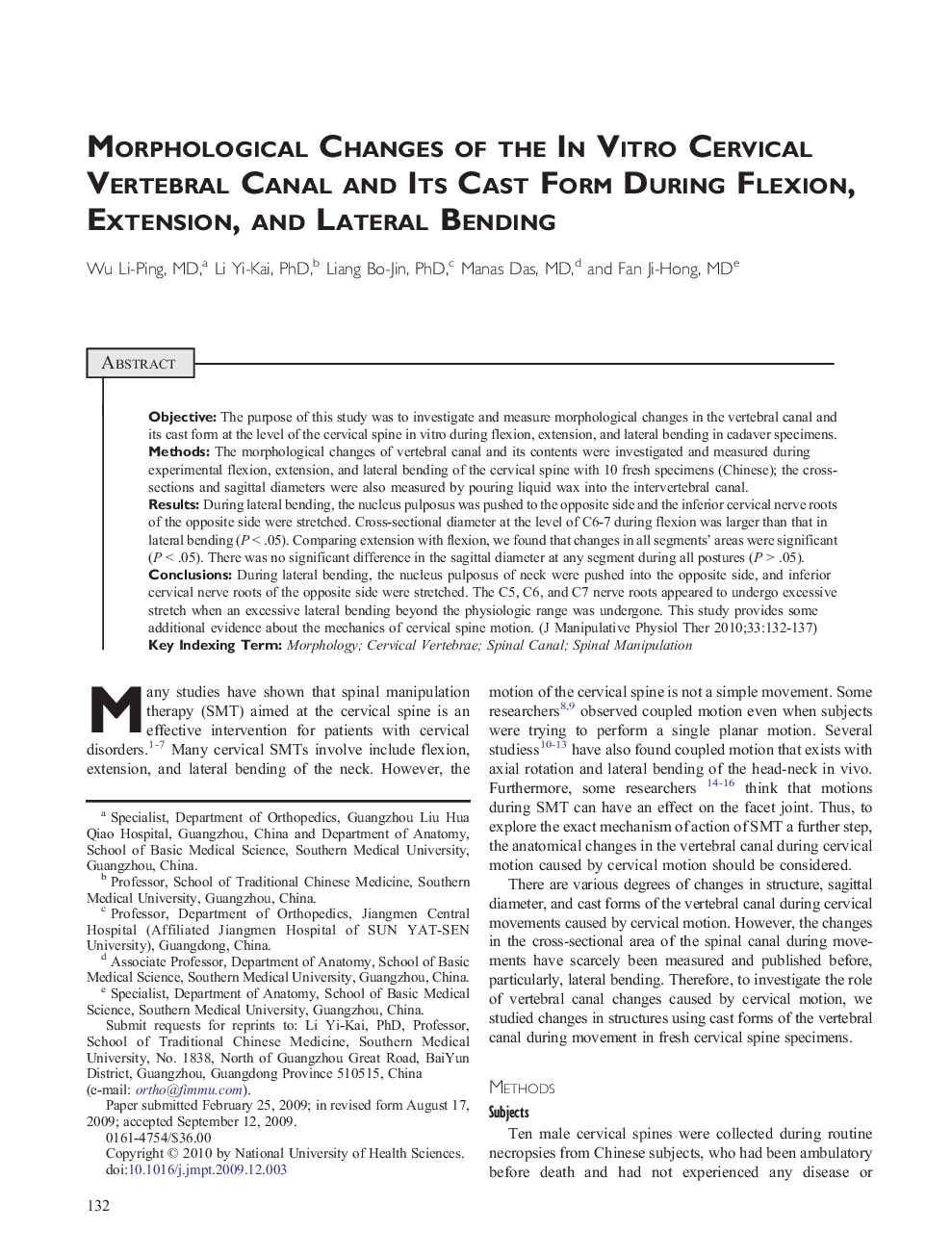| Article ID | Journal | Published Year | Pages | File Type |
|---|---|---|---|---|
| 2621187 | Journal of Manipulative and Physiological Therapeutics | 2010 | 6 Pages |
ObjectiveThe purpose of this study was to investigate and measure morphological changes in the vertebral canal and its cast form at the level of the cervical spine in vitro during flexion, extension, and lateral bending in cadaver specimens.MethodsThe morphological changes of vertebral canal and its contents were investigated and measured during experimental flexion, extension, and lateral bending of the cervical spine with 10 fresh specimens (Chinese); the cross-sections and sagittal diameters were also measured by pouring liquid wax into the intervertebral canal.ResultsDuring lateral bending, the nucleus pulposus was pushed to the opposite side and the inferior cervical nerve roots of the opposite side were stretched. Cross-sectional diameter at the level of C6-7 during flexion was larger than that in lateral bending (P < .05). Comparing extension with flexion, we found that changes in all segments' areas were significant (P < .05). There was no significant difference in the sagittal diameter at any segment during all postures (P > .05).ConclusionsDuring lateral bending, the nucleus pulposus of neck were pushed into the opposite side, and inferior cervical nerve roots of the opposite side were stretched. The C5, C6, and C7 nerve roots appeared to undergo excessive stretch when an excessive lateral bending beyond the physiologic range was undergone. This study provides some additional evidence about the mechanics of cervical spine motion.
